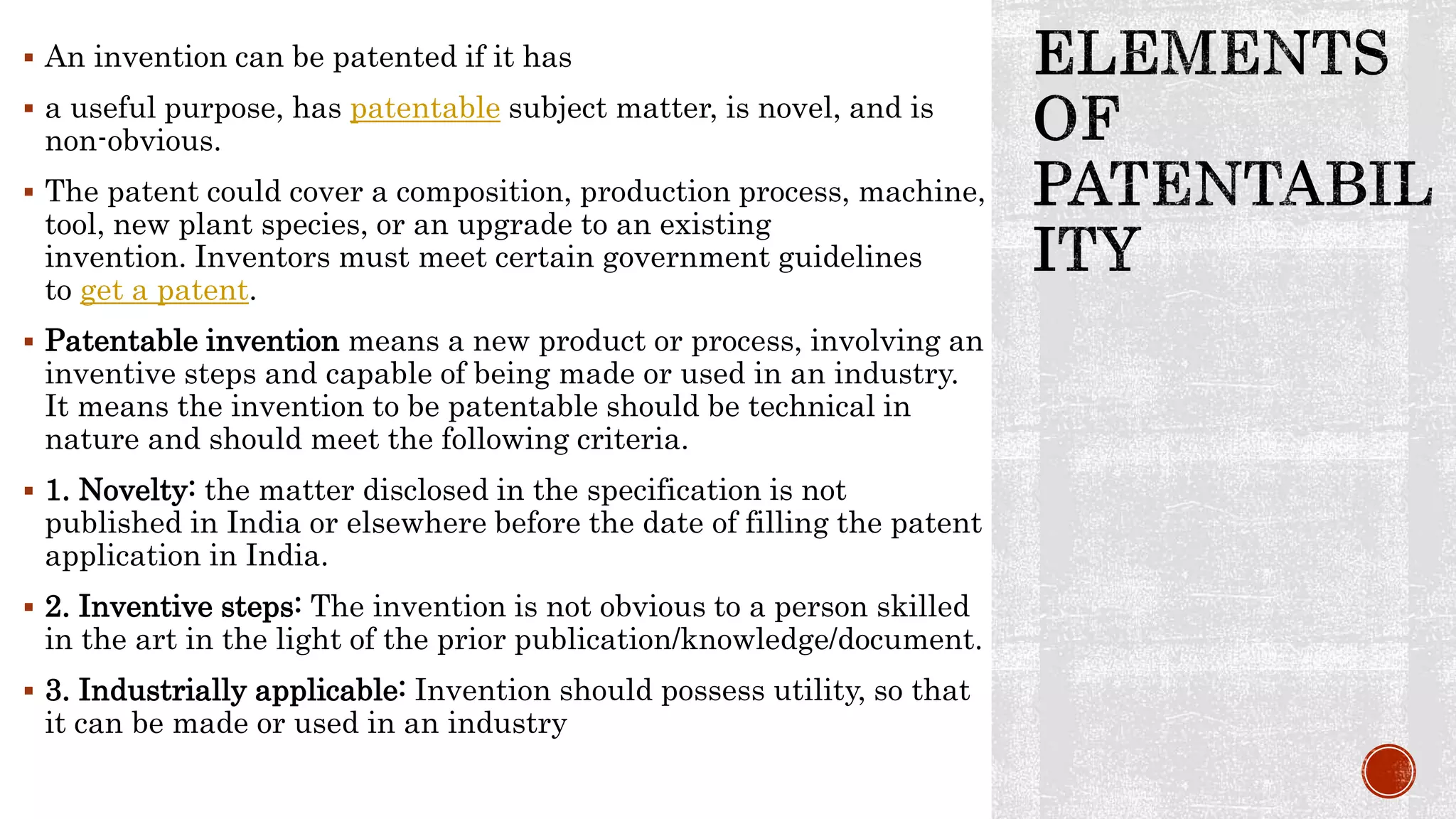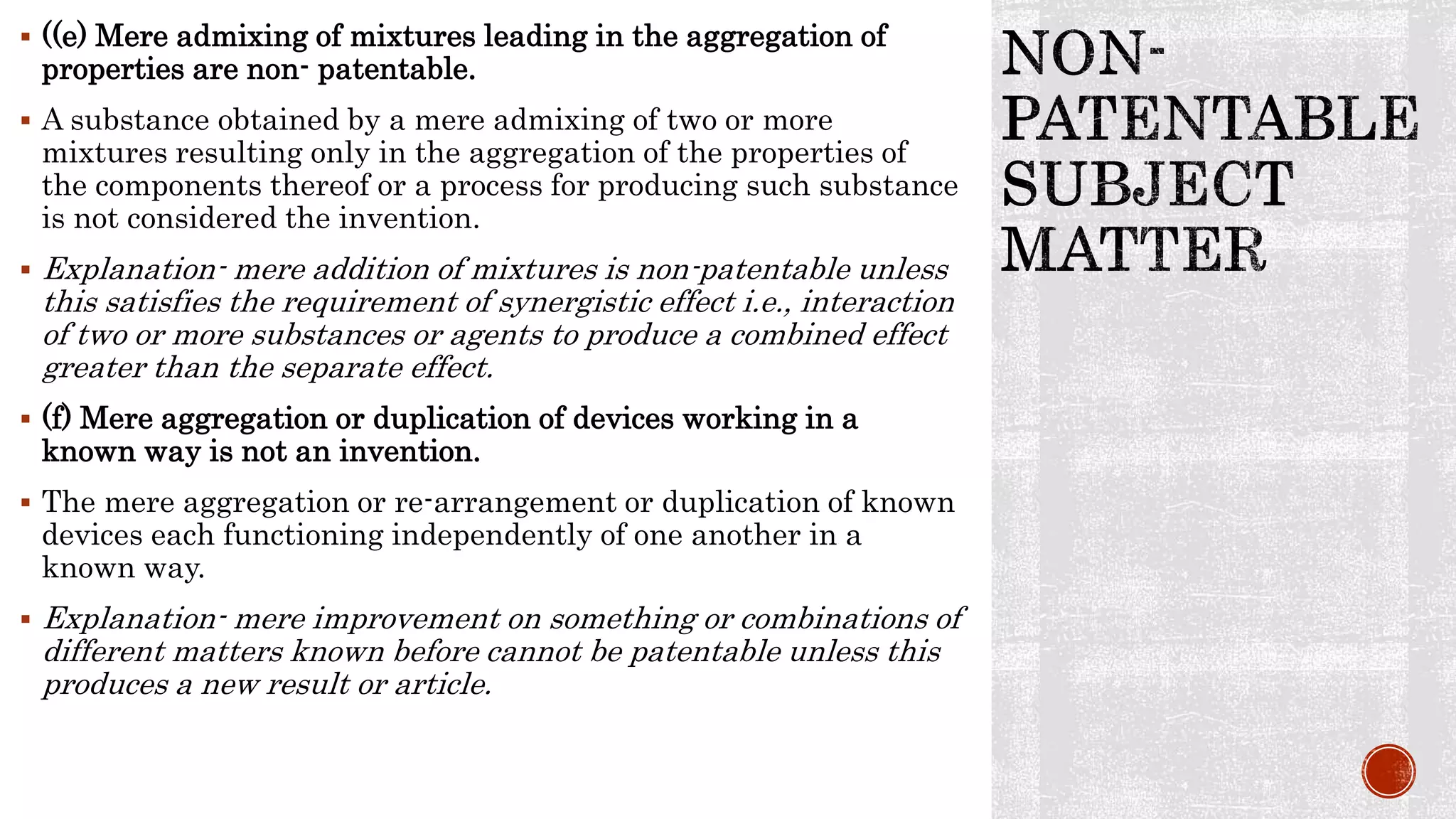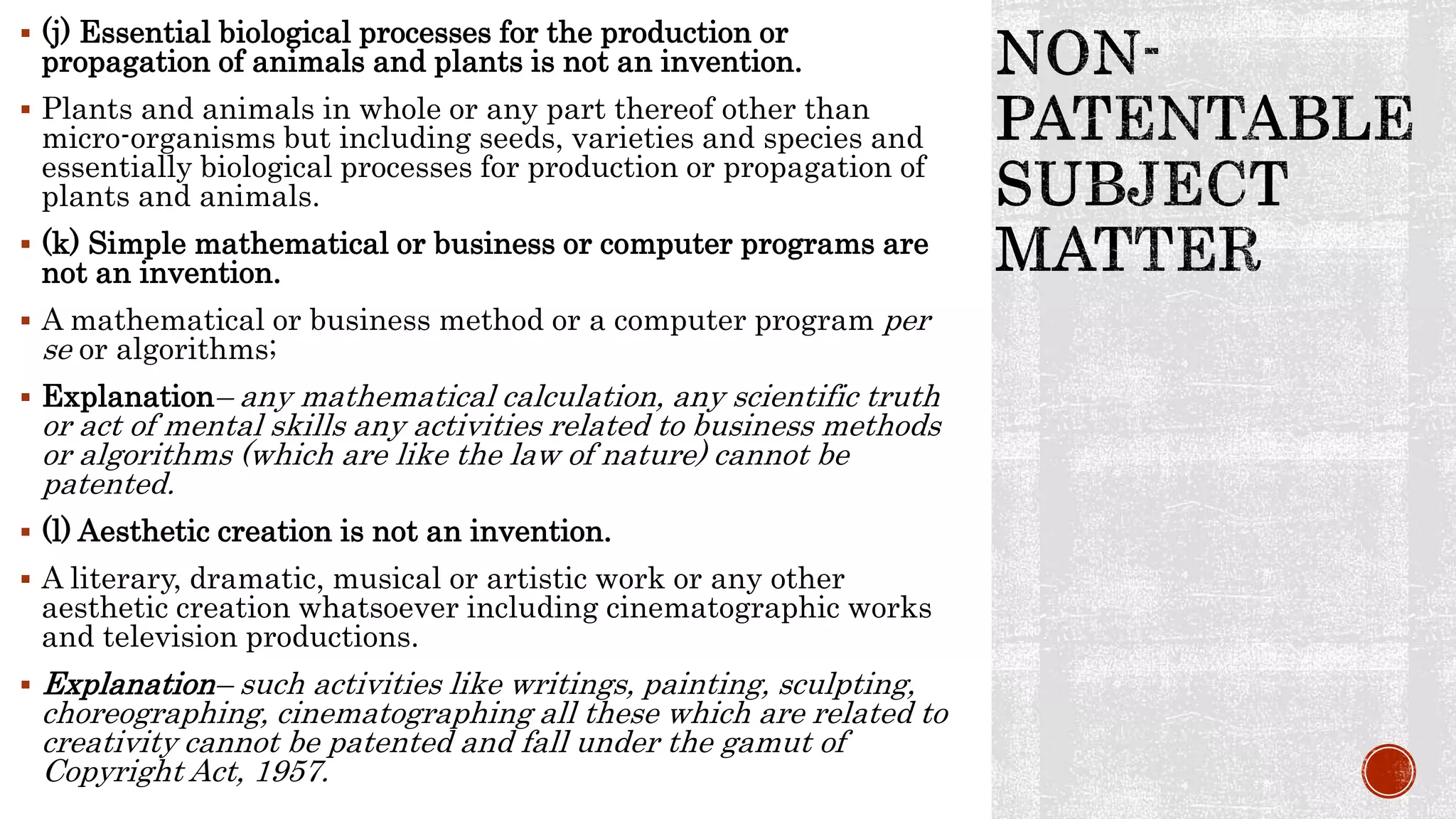The document defines what a patent is and discusses the criteria for an invention to be considered patentable under Indian law. Key points:
- A patent is a grant by the government that gives an inventor sole rights over their invention in exchange for disclosure of details.
- To be patentable, an invention must be novel, involve an inventive step, and have industrial applicability. It cannot be something that already exists in nature.
- Section 3 and 4 of India's Patent Act lists exclusions such as discoveries, theories, business methods, plants, animals, and surgical/therapeutic methods that do not satisfy patentability conditions. Traditional knowledge is also excluded.









